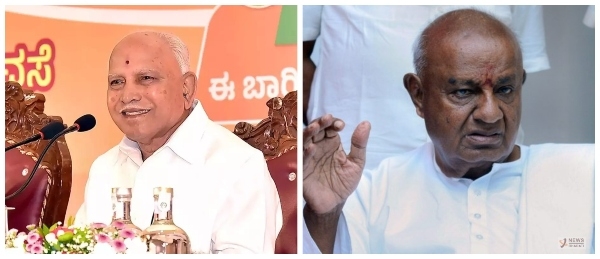Vokkaliga- Lingayat | Karnataka election and social structure
09 May 2023 14:59:54
As Karnataka goes to polls, we will see many experts, and psephologists speaking on who will win the election and who won't. An election is supposed to be an expression of a society through civil means. This is why understanding society is very important before we try to understand an election verdict. In the case of Karnataka, most of us have been hearing about the two major communities, ie. Vokkaliga and Lingayat.

Vokkaliga and Lingayat are two dominant caste groups in the state. Vokkaliga community is very close to the Maratha community from Maharashtra. Both of these communities were traditionally warrior communities as well as farming communities. Both of these communities dominate respective states' cooperatives from Agriculture, and dairy to Banking. Both Maratha and Vokkaliga communities are most dominant in Western Maharashtra and Old Mysore region respectively. Both communities have had political power in their state for a long period of time. On a lighter note, although Sharad Pawar could not be the PM of India, Devegowda was, even though for a very short period of time. Vokkaliga makes up 11% of the state’s population according to the famous/infamous caste census by the Siddaramaiah-led Congress government in 2018.
Also Read: 'Vote to make Karnataka number 1 state': PM Modi writes open letter to voters day ahead of polling
Lingayat community is a Shiva-worshipping community that was revived by the 12th-century Kannada philosopher Basavanna. The Lingayat community is most dominant in the Kittur Karnataka or what was known as the Mumbai Karnataka region. Lingayats constitute 14% of Karnataka’s population. The Lingayat community has many castes within the larger group. This counterweights the socio-economic as well as the numerical dominance of the Vokkaliga community in the state. Culturally and socially Karnataka and Maharashtra are very close to each other. Although the lack of Lingayat counterweight to the dominant caste group, ie. Maratha changed the political structure of both states. In Maharashtra except for the aberration of 95-99, it was a Congress-dominated state until 2014. Karnataka however, became politically competitive since the 1980s. Although BJP became a force in 2004 when BJP finally got a large chunk of Lingayat votes to support them.
Also Read: To show brutality inflicted by Tipu Sultan, Eros International announces film of Islamist tyrant
Apart from these two communities, even Dalit politics is quite different in the two states. In Maharashtra due to Dr. Babasaheb Ambedkar, the Dalit movement has its own rich history. Dalit community however was not a monolith itself, but the political parties and the Dalit movement itself did not take this fact into account. In Karnataka however, there are two types of Dalit groups. Dalit Left and Dalit Right. Dalit Left is a group of castes who are poorer than the Dalit Right and who generally don't own much land. Dalit Rights on the other hand own land and are less poor than the Dalit Left. The current Congress President Mallikarjun Kharge belongs to the Dalit Right. Many polls and surveys have shown the Modi government’s welfare scheme reaching the Dalit Left and their inclination towards voting for BJP as a result. This unique social dynamic makes the Karnataka assembly election interesting.